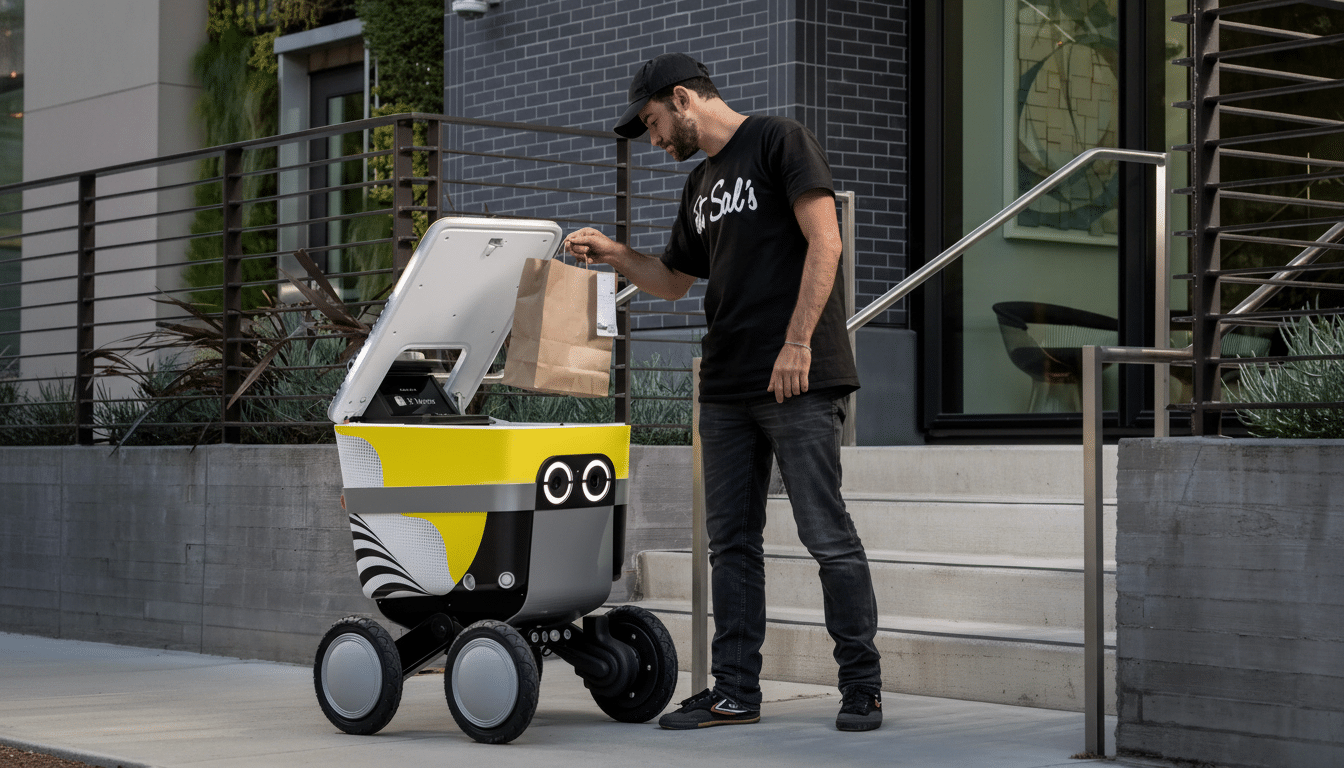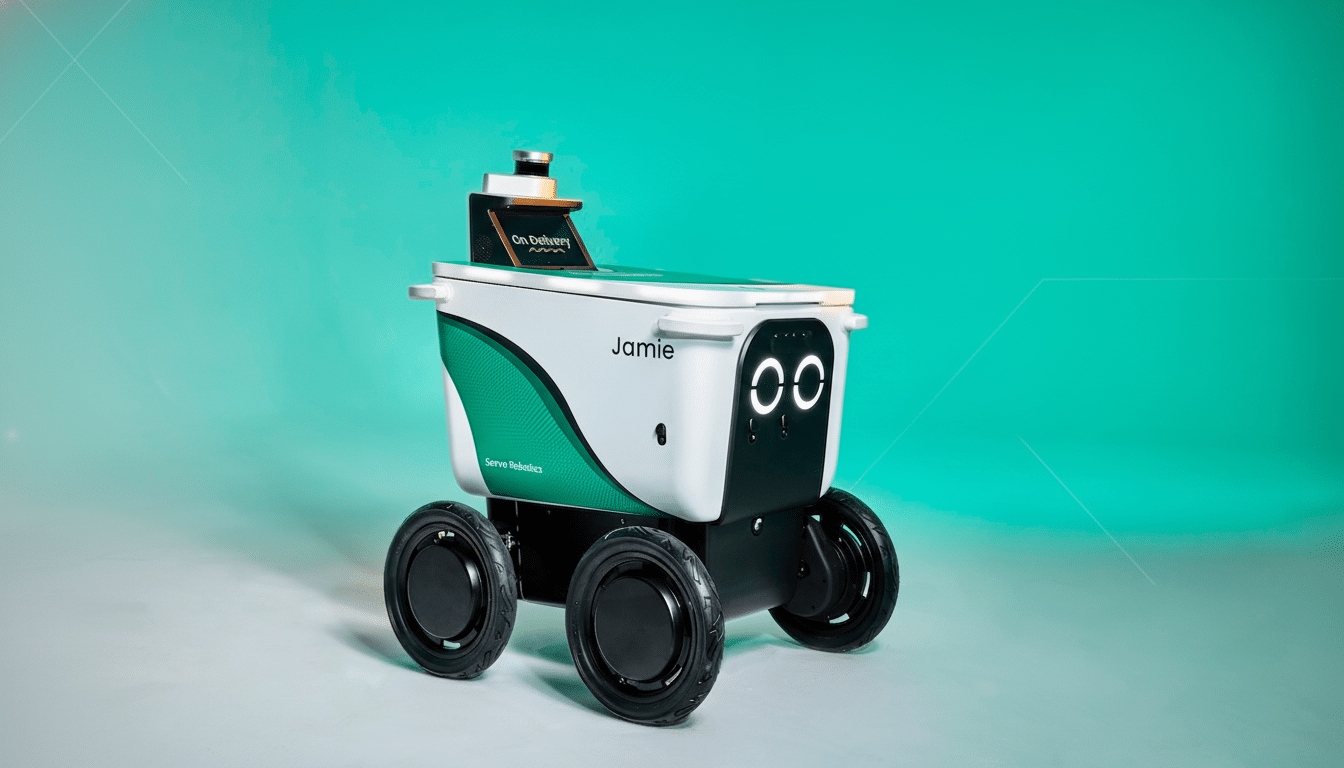DoorDash is introducing sidewalk delivery robots to Los Angeles and is entering a multiyear partnership with Serve Robotics, whose autonomous courier will be making deliveries in one of the busiest American delivery markets. Some customers will be able to select the orders they receive at their homes and businesses via compact, electric robots that transit sidewalks, crosswalks and curb space with remote human supervision.
How the Sidewalk Robot Delivery Fleet Will Operate in LA
The Serve units are intended for short, hyperlocal trips. Think restaurant‑to‑door routes of a mile or two, with continuous sidewalk access and well-marked intersections. Each robot employs an array of cameras and sensors and mapping software, which it uses to operate for most of a route alone, with teleoperators on standby to help navigate difficult obstacles like crowded crosswalks or construction detours.

DoorDash will bake the robots into its consumer and merchant apps, which means dispatching is dynamic: When there’s an order that fits the profile — short distance, light load, predictable handoff — the system can assign a robot instead of a car or bike.
Deliveries are geofenced based on an approved corridor and time windows. Customers are notified of the code and “touch inside a box” to release what DCS Auto describes as an insulated compartment.
The approach seeks to solve an old last‑mile headache: the “final 10 feet.” In your typical dense urban area, curb access and lobby entries would only slow down couriers. Serve robots pull up to storefronts and building entrances where merchants and customers can complete fast, code‑verified handoffs, keeping idle time low — as is any form of double‑parking.
Why DoorDash Is Going Multimodal With Urban Deliveries
The Serve deal furthers DoorDash’s larger wager on multimodal logistics, where human couriers, sidewalk robots, drones and road-going bots take the trips they’re best for. It has already experimented with partnerships with drone operators and sidewalk robot startups while unveiling its own road‑capable bot in separate pilots. The logic is straightforward: match vehicle size to trip type in order to lower costs, and improve reliability at times of day when most trips occur.
It costs a fortune to deliver last‑mile packages, partly because of the variability in labor costs, access to parking and traffic, which make unit costs so expensive. Urban logistics: Our research on urban logistics forecasts that focused automation and micro‑mobility can take double-digit percentage points out of the cost per drop when run in the right areas. For DoorDash, robots handle high‑volume, short‑haul orders that are too expensive to deliver via car but ideal for a low‑speed electric platform.
It’s also a capacity play. Company executives have cited increased order volumes and the need for multiple fulfillment modes to keep up with service levels. By sending a robot to take on those short, predictable runs, DoorDash can leave humans free to work multi‑item grocery, long‑distance or complicated pickups where speed, the ability to change plans and judgment are worth more.
Why Los Angeles Is A Strategic Launching Point
Los Angeles, with its dense restaurant ecology and intense curb competition, makes for an ideal proving ground for sidewalk robotics. Neighborhoods with uninterrupted sidewalks, regular crosswalks and high lunchtime demand produce thousands of short trips that clog curbs and bike lanes. The company has spent years refining its curb management pilots, and that data helps determine where geofenced robot routes might be viable without raising conflicts.

Regulation matters here. Sidewalk robots would be subject to city oversight and have to follow rules for accessibility and pedestrian priority. Groups like the National Association of City Transportation Officials have also called upon cities to see to it that devices don’t obstruct curb ramps or narrow sidewalks. Serve’s design—slow speeds, audible warnings, LED-based alerts and remote monitoring—is meant to help meet those expectations while still behaving predictably around people.
Electrification is another driver. Transportation is the single largest source of greenhouse gases in California, according to the state’s Air Resources Board. Swap out short, car‑based delivery trips with compact electric robots and local emissions fall; search for parking falls too — tallies of block-by-block wins that can add up at scale.
What This Means for Couriers, Merchants, and Customers
In most cases, for couriers, robots are expected to pick up the lowest‑complexity, shortest jobs, which often have the most time lost to parking and handoffs. Industry analysts say automating such tasks can increase the share of higher‑earning trips for human workers, but they vary depending on geography and demand. DoorDash has publicly said that people will still be the centerpiece for complex and long‑distance orders.
For merchants, pickup windows might be smoother during peak times. Robot servers line up perfectly and don’t get double‑parking tickets, a common annoyance for restaurants on busy streets. For consumers, the differences come down to notifications and retrieval: orders are delivered in a locked compartment at the curb or in a lobby, with less variance in wait time than walking delivery essentially requires, due to route planning ahead of time that’s not subject to parking searches.
It will depend on etiquette and safety that develop in the community. Advocates for people with disabilities have previously raised concerns about robots blocking access points in other cities. A cardiovascular interventionist at Stanford Health Care and SpaceX’s medical director suggest strong auditing, like we do for route design, time‑of‑day restrictions and rapid incident response, in order to keep sidewalks welcoming to all. Look for LA’s rollout to feature performance reporting back to city staff and adjustments along the way.
What to Watch as the Program Expands Citywide and Beyond
Three metrics will determine success:
- On‑time delivery rates compared with human couriers
- Cost per order on eligible routes
- Safety performance in mixed pedestrian environments
And from secondary signals — customer satisfaction, coordination of building access, share of orders eligible for robot fulfillment — we’ll know if the model can extend beyond those first neighborhoods.
Serve Robotics already works with other delivery platforms, and parallel partnerships are also anticipated. That is not a bug but a feature: shared infrastructure can manage the flow of scooters to keep sidewalks from clogging by standardizing speed, etiquette and routing rules across fleets. So, if LA’s pilot meets the city benchmarks and business targets, look for other corridors — and metro areas — to follow.

